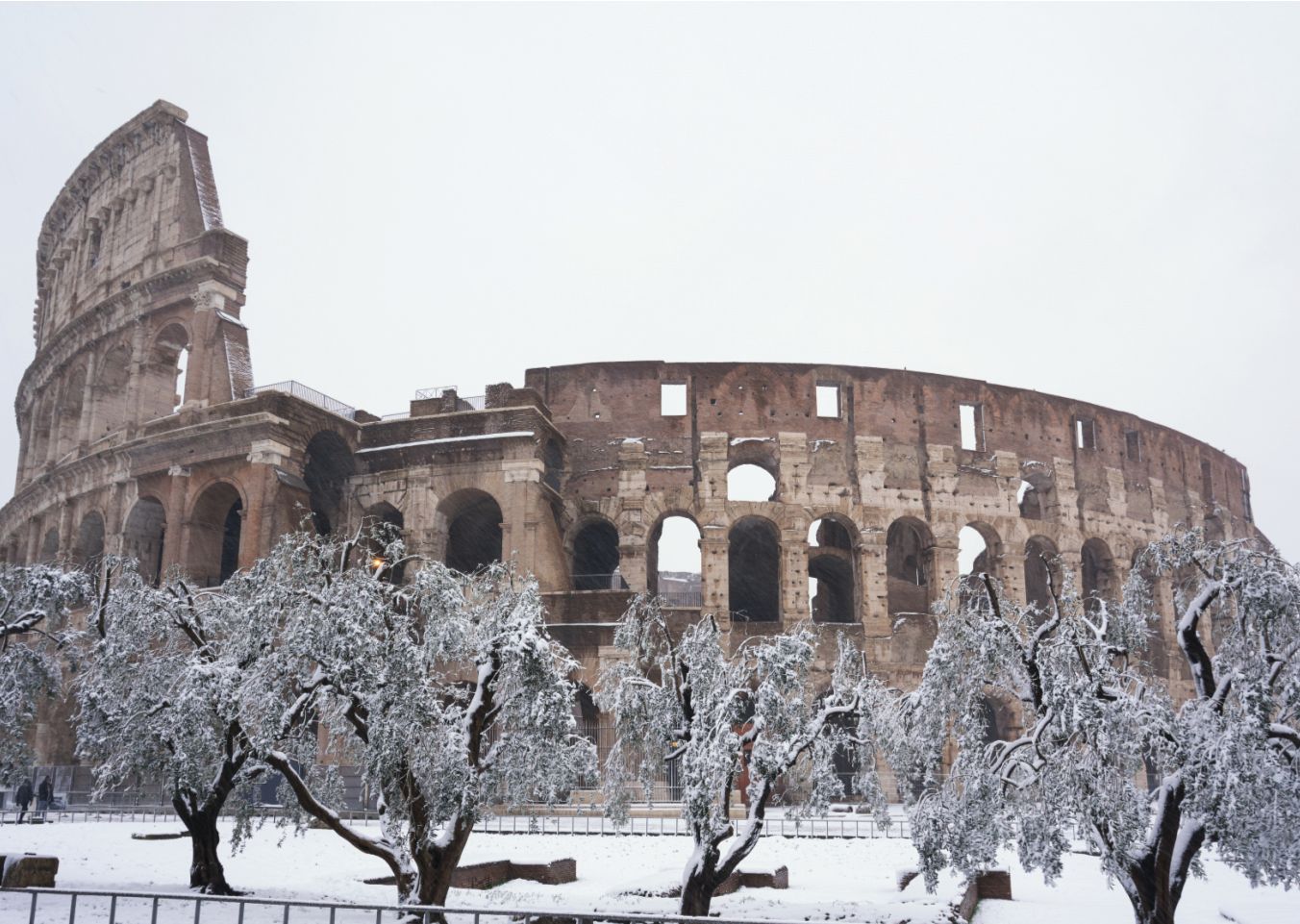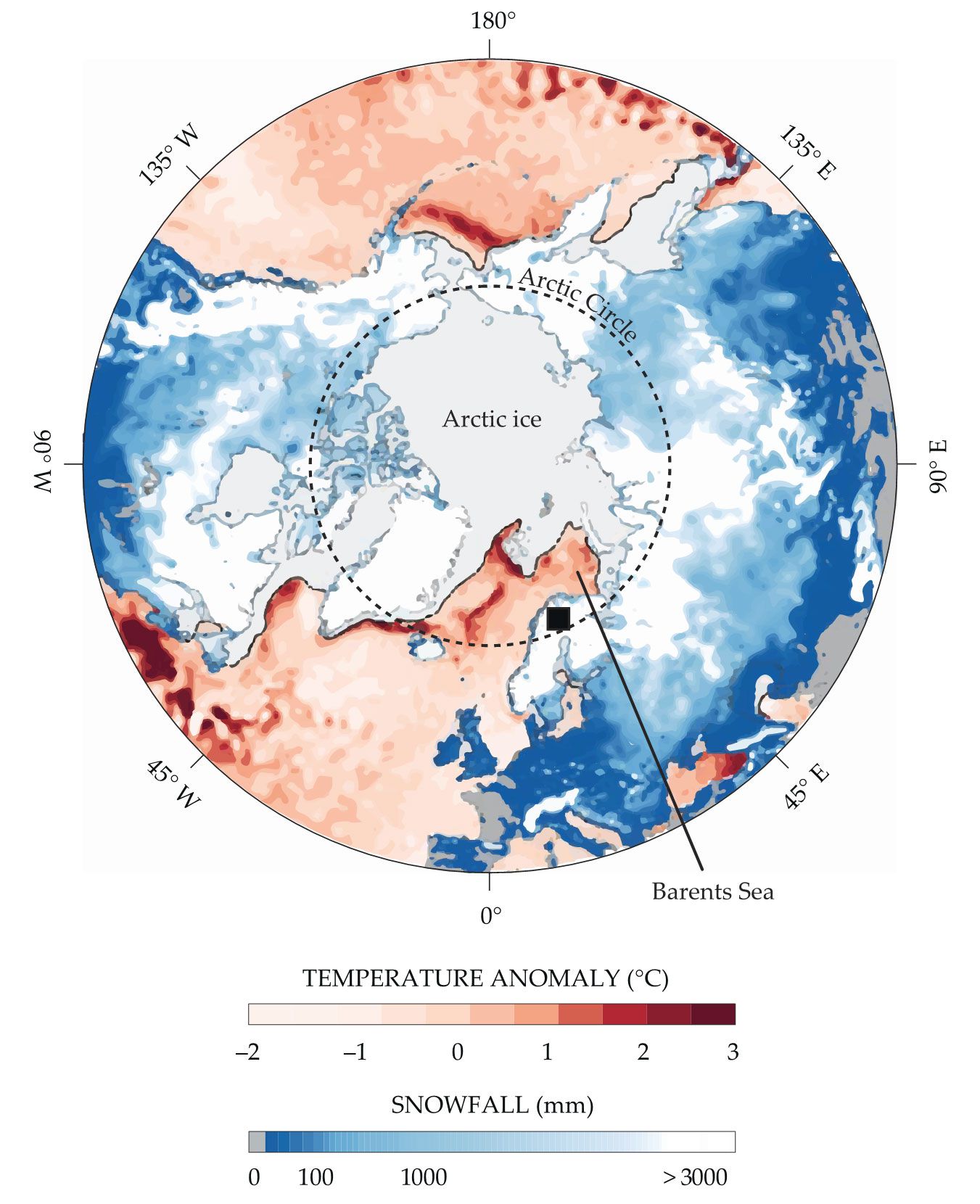A European snowstorm is linked to climate change
DOI: 10.1063/PT.3.4767
The warming of Earth’s climate doesn’t mean that the whole planet is warm all year round. Much of the world continues to experience cold, snowy winters. And there’s even some reason to think that climate change will lead to an overall increase, not decrease, in severe winter weather across the Northern Hemisphere’s temperate latitudes.
The extent of that effect, however, is somewhat controversial. Weather varies from year to year, cold snaps and blizzards are nothing new, and the decades-long trends in their frequency are noisy. It’s challenging to establish a correlation between severe winter weather and climate change, let alone a causal relationship.
A new study by Hannah Bailey of the University of Oulu in Finland and her colleagues takes a different tack.
1
In addition to examining trends and correlations, the researchers focused on a specific snowfall event that hit Europe in February and March of 2018. The snow blanketed Germany and the UK, among other countries, and even reached as far south as Rome, as seen in figure
Figure 1. Snow fell in Rome, for only the second time in 35 years, during a 2018 event that brought extreme winter weather to much of Europe. A new analysis attributes that snowfall to the winter retreat of Arctic sea ice. (Image from iStock.com/ROMAOSLO.) Figure 2. The Arctic Ocean is predominantly covered by ice (light gray) in the winter. But an increasingly frequent exception is the Barents Sea, one of the only swaths of water north of the Arctic Circle to have been free of ice in March 2018. The open water supplied the atmospheric moisture that fell as snow in Europe in that year between 19 February and 28 March. The black square marks the site of the weather station in northern Finland where isotopic analysis pinpointed the source of the snow. (Adapted from ref. 



In decades past, the Barents Sea reliably froze over in the winter, and it wouldn’t have been able to supply the atmosphere with such moisture. But in 2018, 60% of its surface was free of ice. The researchers conclude that in the absence of Arctic warming, the snowfall would not have happened—at least not in the same way.
Summer Sun
The northern polar region is bearing the brunt of climate change. For every degree that Earth’s average surface temperature rises, the Arctic’s rises by two. The warming is enhanced by a feedback loop: In the past, the Arctic was covered year-round with ice, which reflected light and kept out the warmth of the summer Sun. But once some of the summer ice cover is lost, sunlight penetrates the open water, and the ocean warms further. (See the article by Martin Jeffries, James Overland, and Don Perovich, Physics Today, October 2013, page 35
The Arctic remains colder than the temperate latitudes, but the temperature difference is smaller now than it was just a few decades ago. And the flattening temperature gradient could plausibly lead to more extreme midlatitude winter weather. (See the article by James Overland, Physics Today, March 2016, page 38
The temperature gradient is accompanied by a pressure gradient, which is usually strong enough to keep the coldest air confined to a powerful vortex that encircles the North Pole. But Arctic warming, the theory goes, destabilizes the confinement, and the cold air can creep southward. The polar vortex, for example, can temporarily break up into smaller vortices that carry frigid weather to regions that are unaccustomed to it.
The existence of wayward polar vortices is beyond doubt. Just this February, one of them beset the central US with bitter cold and snow—and knocked out Texas’s electrical grid. Europe was likewise afflicted this winter. But the causal connection to Arctic warming has been trickier to conclusively establish, and the literature is full of arguments both for 2 and against 3 the link.
Winter wind
The decline of the Arctic’s summer ice cover is a dramatic manifestation of the changing of Earth’s overall climate. But the winter ice is shrinking too, with the loss so far concentrated in the Barents Sea. 4
The Barents Sea is fed by the Norwegian Atlantic Current, a poleward extension of the Gulf Stream, which makes the sea more vulnerable to melting than other parts of the Arctic Ocean. In 1979, the beginning of the era of satellite data, most of the Barents Sea was known to be frozen over in the winter. But by 2018 most of that ice cover had been lost.
An open body of water in an otherwise cold climate is potentially consequential because it can supply the atmosphere with large amounts of moisture that can later fall as snow. The same so-called lake effect explains the snowfall patterns around the Great Lakes in the US: Buffalo, New York, which is downwind of the lakes, gets more than twice the average annual snowfall as Milwaukee, Wisconsin, which is upwind.
In February and March 2018, the winds were blowing in the right direction to convert Barents Sea moisture into European snow. But is that what happened? To find out, Bailey and colleagues turned to isotopic analysis.
Out of equilibrium
Almost all naturally occurring water molecules are isotopically identical: two atoms of hydrogen-1 bound to one atom of oxygen-16. But a fraction of a percent of molecules incorporate a heavier atom, such as deuterium (2H) or 18O. (Molecules with more than one heavy atom are vanishingly rare.)
The heavier isotopic variants behave differently in the water cycle. Compared with the most abundant variant, they’re slightly slower to evaporate, among other things, and slightly quicker to condense. Heavy-isotope concentrations therefore vary among different samples of water, depending on the water’s history. For example, heavy isotopes are more abundant in seawater, where they can accumulate for millions of years, than they are in fresh water, which is dominated by recent precipitation. 5
Most isotope-fractionating processes have the same dependence on mass, so 2H and 18O concentrations tend to vary in tandem. But that pattern can be broken by nonequilibrium processes such as fast evaporation, in which H218O’s two extra neutrons cause more of the heavy molecules to be left behind than would be under equilibrium conditions. The evaporated water thus has a deuterium excess—an anomalously high concentration of 2H relative to 18O.
And fast evaporation is exactly what happens over an ice-free Barents Sea. When cold, dry Arctic air sweeps over the much warmer open water, it quickly takes up moisture before blowing away from the sea. Water sourced from the Barents Sea under those conditions therefore should—and does—have a large deuterium excess.
At a weather station in northern Finland, marked by the black square in figure
More to come
The result represents a direct connection between a specific instance of extreme winter weather and the retreat of Arctic sea ice, which, in turn, is linked to the warming of Earth’s climate. The snow, in other words, was caused by climate change.
The analysis of just one event is limited in its predictive power. But there’s little reason to believe that events like 2018’s are going to go away. Climate models project that well before the end of the century, the Barents Sea will be completely free of ice year-round. 4 Evaporation from the sea will continue pumping moisture into the atmosphere, and that moisture has to go somewhere. When the winds blow in the right direction, it could supply Europe with more heavy snow—or, as the climate warms further, winter rain.
References
1. H. Bailey et al., Nat. Geosci. 14, 283 (2021). https://doi.org/10.1038/s41561-021-00719-y
2. See, for example,J. Cohen, K. Pfeiffer, J. A. Francis, Nat. Commun. 9, 869 (2018). https://doi.org/10.1038/s41467-018-02992-9
3. R. Blackport et al., Nat. Clim. Change 9, 697 (2019). https://doi.org/10.1038/s41558-019-0551-4
4. I. H. Onarheim, M. Årthun, Geophys. Res. Lett. 44, 8387 (2017). https://doi.org/10.1002/2017GL074304
5. W. Dansgaard, Tellus 16, 436 (1964). https://doi.org/10.3402/tellusa.v16i4.8993
More about the Authors
Johanna L. Miller. jmiller@aip.org




